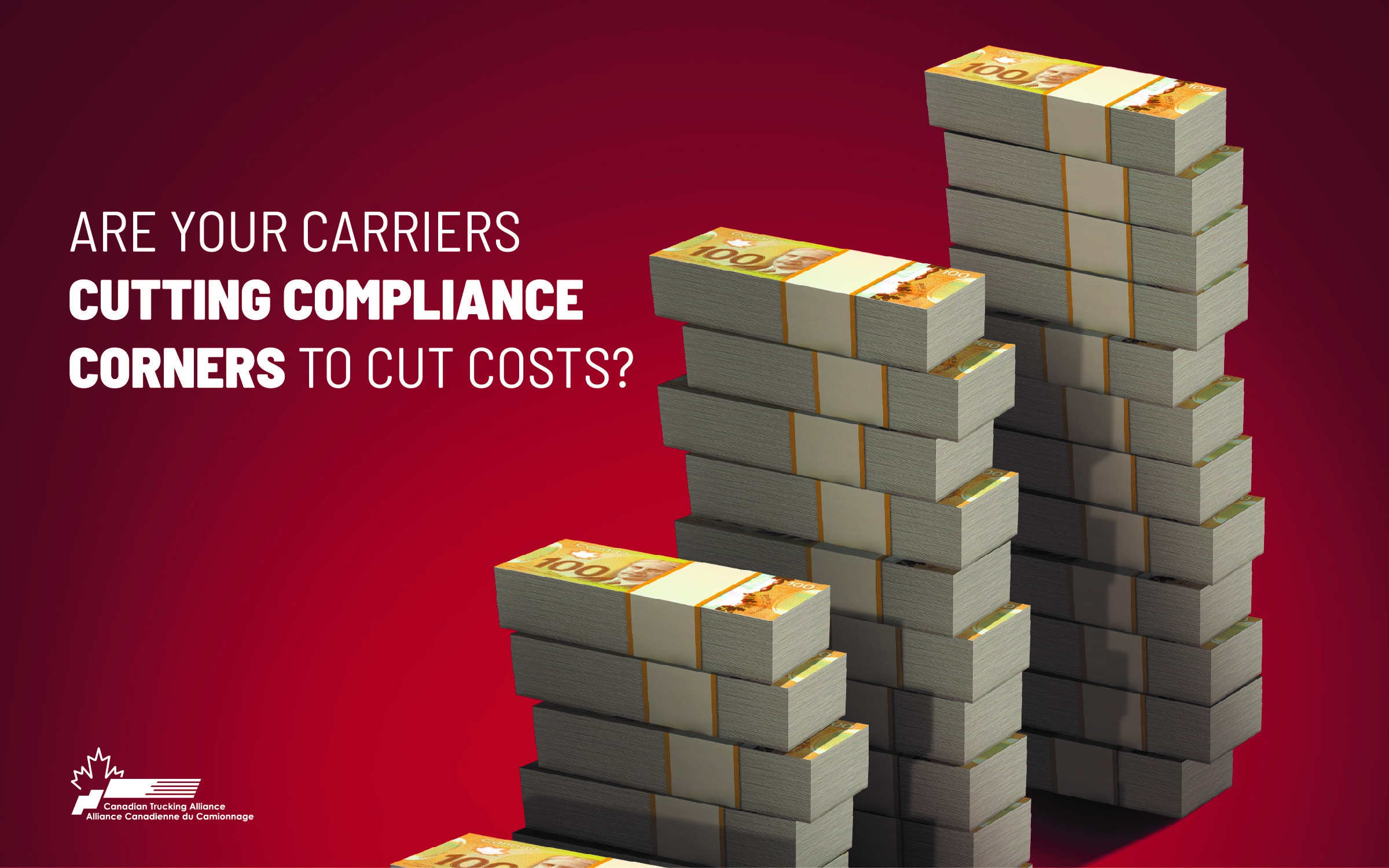Driver Inc.
French | Punjabi | German | Tagalog
Since August 2018, the Canadian Trucking Alliance and provincial trucking associations have been sounding the alarm about Driver Inc. While our industry – and the world – was distracted by COVID-19, the reality is that Driver Inc not only didn’t go away, but it has gained a foothold. Because of this, concerns about this underground economy have been elevated to various levels of government. So, what is it and what steps can be taken to eliminate it from further staining our industry?

What is Driver Inc?
According to the CTA’s first press release about Driver Inc in 2018, it is a “model based on commercial drivers, who do not own/lease or operate their own vehicle, becoming incorporated and receiving payments from their carrier with no source deductions”. In its simplest form, Driver Inc drivers are company drivers paid in a “nudge-nudge, wink-wink” fashion, at a more competitive rate because there are no source deductions or other remittances being paid, such as WCB, overtime, or other costs. The take-home pay for these drivers is comparable to that of drivers working for legitimate carriers; however, it is only comparable because remittances aren’t being paid. It would be much lower once source deductions are factored into the pay equation. However, since remittances are paid neither by the carrier or driver, the “take-home” pay appears comparable. This then allows the carrier to operate with lowered rates, placing them at an illegal competitive advantage and leaving their Driver Inc employees at risk.
There are many factors considered by the Canada Revenue Agency when determining if someone is an employee or self-employed; in the trucking industry, the biggest question is who owns/makes payments on the truck? If you own the truck (or are making the payments on it) and are operating as an owner-operator paying your remittances based on your T4A, then you are not engaged in Driver Inc. The biggest red flag in Driver Inc schemes is “self-employed” individuals who don’t provide their own equipment; this is an intentional misclassification to avoid paying required remittances.

How does Driver Inc impact the industry?
While it may seem like this scheme is merely a convenient loophole for carriers to take advantage of, there are serious consequences associated with Driver Inc. Very often, WCB remittances are not made, either by the carrier or driver using this scheme. Do you want someone without WCB coverage working on your property? If these drivers are injured, they very often do not have their own coverage.
If something like WCB isn’t being paid, what other shortcuts are being taken regarding driver safety? What shape is their equipment in? Do they have proper insurance coverage for the freight being moved? How else are they shortchanging not only their drivers, but also their customers, in order to move freight at a reduced rate? Furthermore, how is the safety of the general public being put at risk? What do their log books look like, and are they operating under the hours of service regulations? If you are a shipper, receiver, or another carrier using a third party carrier, these are very real concerns you should consider before supporting Driver Inc carriers.
Legitimate carriers are impacted by Driver Inc as well. By misclassifying employees as independent contractors to save on payroll costs, Driver Inc carriers can offer lower rates. This means that your company will have to review rates in order to be competitive. It has been estimated that payroll costs for Driver Inc companies may be as much as 35% lower than they are for law-abiding fleets – how would that impact the rates you are able to offer and how you are able to compete? In an industry that already runs on tight margins, can we afford to tighten them further to compete with carrier operating outside of their legal obligations?
Finally, it is estimated that Driver Inc is costing the Canadian government as much as $1 billion annually. After seeing the costs associated with running services, provincially and federally, during this pandemic, governments at all levels need all the financial resources they can find. Supporting Driver Inc carriers to make a buck because they have a cheaper rate from Winnipeg to Vancouver is a short-sighted way to participate in the Canadian way of life, one where we all contribute our share.

“It is estimated that Driver Inc is costing the Canadian government as much as $1 billion annually”
Looking Ahead
So what can be done about Driver Inc?
Provincial trucking associations and the Canadian Trucking Alliance have been working with various governments to alert them to this underground economic activity. In Manitoba, we have taken the opportunity to discuss this issue with our local ESDC (Employment & Service Development Canada) office, WCB Manitoba, MPI, and Motor Carrier Division. All departments are aware that Driver Inc is operating in Manitoba and are concerned.
What can industry do to prevent Driver Inc?
If you are aware of a company operating under this scheme, report them to your provincial trucking association, who can elevate the issue properly in your province. If you are a shipper, receiver, or carrier, avoid doing business with them.
If you are a carrier who employs self-employed individuals, owner-operators or independent contractors and you aren’t taking source deductions, you must issue T4As to those contractors, just like you issue T4s to employees. The T4A will include all amounts paid to the self-employed individual, who can then use this slip to file their taxes and submit required remittances. By issuing T4As to these employees, you will comply with CRA regulations.
Finally, if you are a driver who was unaware of the illegality of this hiring scheme, know your rights. True owner-operators are not the issue with Driver Inc; they are legitimate business owners. Those who are trying to get the benefits of being a business owner while dodging their financial obligations in order to engage in predatory pricing are. You can remain incorporated, but as a dependant contractor, and you will be considered a personal service business (or PSB) operating under a different taxation scale (also known as an incorporated employee). You will still receive a T4A slip, and you will need to complete at T2 Corporate Income Tax Return as well as a T1 Personal Income Tax and Benefit Return.
If the carrier you work for is unwilling to provide this, then you need to consider for yourself what your next steps will be: move on to a carrier that operates aboveboard and pays their drivers AND their remittances properly, or continue working for a company that knowingly cuts corners? How long are you willing to push your luck?
Driver Inc. in the News
An Unfair Brake on Competition (La Presse, February 22, 2024)
Driver misclassification a ‘disaster’ for trucking companies, TFI head says (Ottawa City News, February 9, 2024)
CTA, Teamsters and carriers take Driver Inc. fight to Parliament Hill (TruckNews, May 16, 2023)
Minister O’Regan Leads Discussion on Tackling Driver Inc; Pledges Enforcement With ‘Teeth’ (CTA; November 7, 2022)
Driver Inc. employers face $250K fines, labour minister warns (TruckNews.com; November 7, 2022)
CTA: Feds Target Driver Inc. in Fall Economic Statement (CTA; November 3, 2022)
